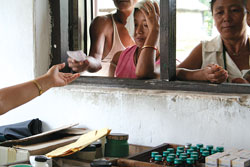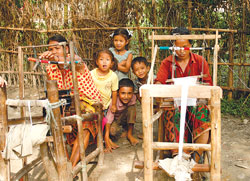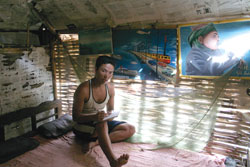 How do Bhutani refugees see their world? Some were born in the camps and have never seen their motherland, all have spent the past 17 years as refugees.
How do Bhutani refugees see their world? Some were born in the camps and have never seen their motherland, all have spent the past 17 years as refugees.
Three organizations teamed up to train selected refugee journalists in a four-day photography training. These are some of the pictures the trainees took, the young refugees look inward to find their personal voices to tell their stories of camp life. As insiders, their pictures show us the true story of the daily life in the camps for the 100,000 Bhutanis who are now waiting for third-country repatriation. The photojournalism training was supported by Third World Media Network, Bhutan Press Union, Association of Press Freedom Activists-Bhutan and Drik India. Photos will be on display at the photo.circle Saturday 3 November 10AM-12PM at Sundhara Bakery Cafe.
Aita Maya Subba
Approximately 290 patients come to the UMP Hospital to get medicinal treatment everyday. The hospital runs from 8:45 AM and till 4PM. Simple cases are given treatment here, but complicated cases are handled by AMDA hospital.

Radhika Homagain
Ganga Maya Gurung and Sukh Maya Monger weave Dhaka topis, which they sell to earn a living. Support provided by UNHCR is not sufficient to meet the basic requirements of their family. According to the women, it is not an easy task because of their old age. They were evicted from their homes in Danabari by the government of Bhutan in 1990.

Yam Thulung
Khina Maya Kalikotae is frustrated that she has not been able to use the tailoring, bamboo basket making, knitting, embroidery and other skills that have been provided to her by various NGOs within the camps. She has not been able to start up a business due to lack of funds. Khina Maya is originally from Labshibhotae village in Tshirang District, Bhutan. She lost her hearing and speech due to severe unidentified illness when she was a child. Now she struggles to live the life of a widow, with no income of her own. Around 100,000 Bhutani citizens are leading a miserable life of asylum in exile in eastern Nepal.

Cheta Nath Khanal
Bhakta Bahadur Rai, 26, is a 10 +2 graduate and originally from Chirang district in Bhutan. Now he expresses the sorrows of separation from his homeland in the paintings and sculptures that he makes. He has opened a library and an art gallery in his hut to promote art and to manage daily expenses for his family of 10 members.


